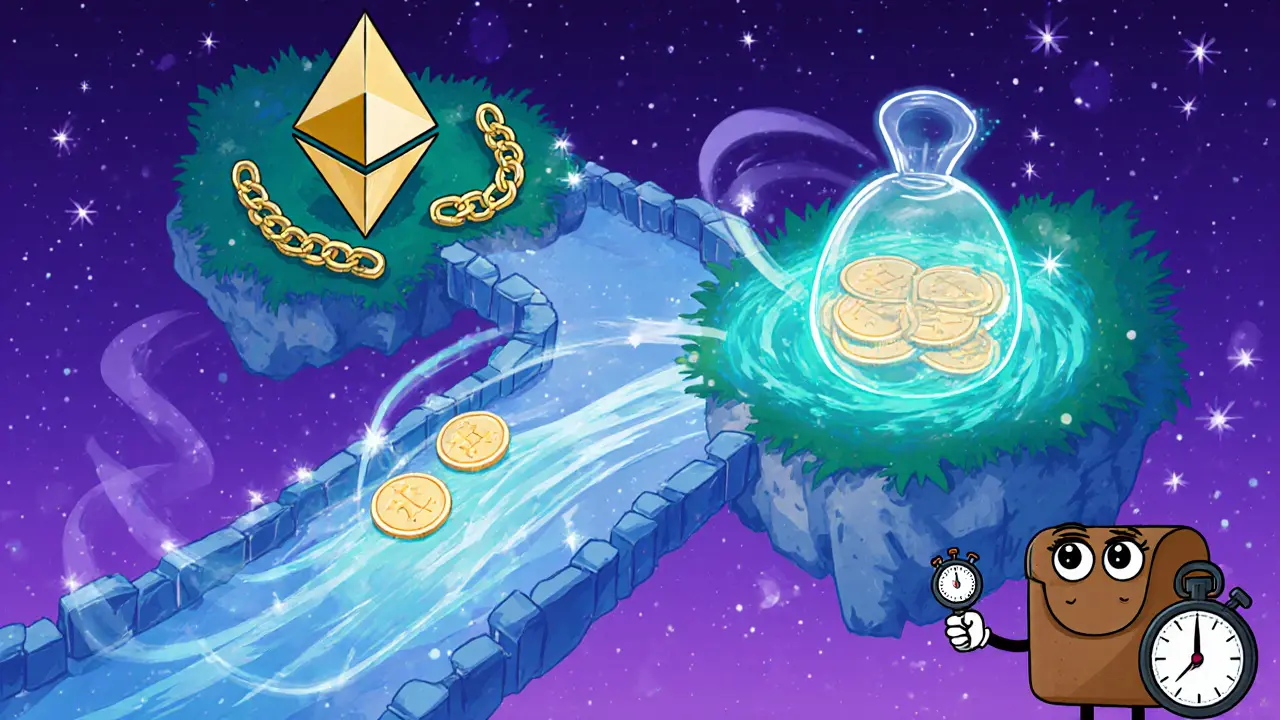Uniswap Unichain Gas Fee Calculator
Calculate Your Savings
See how much you save by trading on Unichain compared to Ethereum mainnet
Want to know if the newest Uniswap upgrade actually lives up to the hype? This deep dive breaks down the Uniswap v2 Unichain review you’ve been waiting for - from transaction speed to fee savings and what it means for your DeFi strategy.
What is Unichain?
Unichain is an Ethereum Layer‑2 rollup built by Uniswap Labs and powered by Optimism’s OP Stack technology. Launched on February 11, 2025, it’s designed specifically for DeFi apps, offering 1‑second block times and roughly 95% lower gas fees than Ethereum’s mainnet. Unlike many experimental L2s, Unichain ships with permissionless fault proofs from day one, meaning the network can resolve disputes without a central authority.
How Uniswap v2 fits on Unichain
Uniswap v2 is the second‑generation automated market maker (AMM) that introduced pair‑wise pools and the now‑familiar router contract. When you open the Uniswap interface on Unichain, the UI stays the same, but every swap, add‑liquidity, and token approval runs on the faster, cheaper rollup instead of Ethereum L1.
Speed and Cost: Numbers that matter
- Block finality on Unichain: sub‑second (≈250 ms targeted soon with Flashbots’ TEE integration).
- Transaction fee: about 5% of what you’d pay on Ethereum L1.
- Typical swap cost: $0.0003 vs $0.006 on mainnet (2024 average).
- Liquidity‑provider capital efficiency improves by ~2× because fees are lower and trades settle faster.
For a trader moving $10,000 daily, that’s a monthly saving of roughly $1,800 in gas alone.
How to get started - a step‑by‑step guide
- Visit the official Uniswap app (no need for a new UI).
- Connect your wallet (MetaMask, Rabby, or the Uniswap Wallet).
- Open the bridge tab and select “Ethereum → Unichain”. Confirm the bridging transaction on L1 - it will cost standard Ethereum gas.
- Once the bridge confirms (usually under a minute), you’ll see your assets on the Unichain network selector.
- Trade, add liquidity, or stake UNI on Unichain exactly as you would on Ethereum, but with the reduced fees shown in the UI.
The learning curve is minimal for existing Uniswap users because the interface and contract addresses stay the same - only the underlying network changes.

Comparing Unichain with other Layer‑2 solutions
| Feature | Unichain | Optimism | Arbitrum | Polygon | Ethereum L1 |
|---|---|---|---|---|---|
| Block time | 1 s (target 250 ms) | 2 s | 2 s | 2 s | 13 s |
| Gas fee reduction | ≈95 % | ≈90 % | ≈85 % | ≈80 % | 0 % |
| Permissionless fault proofs | Enabled at launch | Planned Q2 2026 | Planned Q3 2026 | Not announced | N/A |
| EVM compatibility | Full | Full | Full | Full | Full |
| DeFi focus | Purpose‑built for AMMs, lending, derivatives | General‑purpose | General‑purpose | General‑purpose | All |
What this table tells you is that Unichain isn’t just another rollup - it’s a DeFi‑centric rollup with security features (fault proofs) that many competitors still lack.
Liquidity migration: Should you move your positions?
Uniswap holds over $5 billion in assets across its v2, v3, and v4 pools. Moving a portion of that liquidity to Unichain can boost capital efficiency, but there are trade‑offs:
- Pros: Lower fees, faster trade execution, higher pool turnover, potential migration incentives from Uniswap Labs.
- Cons: Temporary bridge risk, slightly higher L1 gas for the bridge transaction, and the need to monitor cross‑chain messaging until full decentralization of sequencers.
Most LPs plan to migrate a fraction of their position first, test the waters, and then shift the rest once the network proves stable for a few weeks. Keep an eye on announcements from the Uniswap Foundation - they’ve pledged $36.8 million for grants and migration incentives.
Revenue model shift - what’s new for UNI holders?
Uniswap Labs recently revamped its fee distribution. The protocol now sends 20% of total fees to the Labs treasury, while the Optimism Collective grabs 2.5% of gross revenue (or 15% of net revenue, whichever is higher). The remainder goes to Unichain sequencers and, eventually, to UNI token stakers when the sequencer network fully decentralizes.
This change aligns protocol value with token holders: staking UNI will soon let you claim a slice of the fee pool directly. Early analysts predict a modest UNI price bump as the staking APY could reach double‑digit percentages once the fee split is fully on‑chain.

Security and decentralization outlook
Permissionless fault proofs give Unichain a safety net that many newer rollups lack. In practice, if a sequencer tries to publish an invalid block, any validator can submit a fraud proof and force a rollback - all without needing a trusted operator.
The roadmap includes a fully decentralized validator set governed by UNI stakers, plus TEE‑based block building with Flashbots to knock block times down to 250 ms. Expect the network to become more trustless over the next 12‑18 months, which should reassure risk‑averse institutions.
Market impact - how will Ethereum feel?
Uniswap accounts for roughly 14.5% of Ethereum’s total gas usage. If a sizable chunk of that swaps onto Unichain, ETH’s burn rate could dip, putting mild upward pressure on ETH’s supply and potentially reducing validator rewards tied to transaction fees. On the flip side, the migration showcases a healthy ecosystem of scaling solutions - a positive signal for the long‑term health of DeFi.
Key Takeaways
- Unichain delivers sub‑second finality and ~95% fee cuts compared to Ethereum L1.
- Uniswap v2 works on Unichain without UI changes, making the switch seamless for existing users.
- Permissionless fault proofs set Unichain apart from many competing L2s.
- Liquidity providers should consider partial migration to capture fee savings, but watch for bridge fees and upcoming incentives.
- UNI staking will soon earn a direct share of the fee revenue, creating extra upside for token holders.
Frequently Asked Questions
Do I need a new wallet to use Unichain?
No. Your existing Ethereum‑compatible wallet (MetaMask, Rabby, etc.) works out‑of‑the‑box. Just add the Unichain network or use the built‑in bridge in the Uniswap app.
How much cheaper are trades on Unichain?
Typical swaps cost about 5% of Ethereum L1 fees - roughly $0.0003 per $10,000 trade versus $0.006 on mainnet.
Is Unichain secure?
Yes. It launched with permissionless fault proofs, meaning anyone can challenge a fraudulent block. The underlying OP Stack has been audited by multiple firms, and Unichain inherits Optimism’s security model.
Can I provide liquidity on Unichain?
Absolutely. All existing Uniswap v2 pools are mirrored on Unichain. Add liquidity the same way you do on Ethereum, but you’ll pay a fraction of the gas.
Will my assets be safe when I bridge to Unichain?
Bridging uses audited contracts from the Uniswap team and the Optimism ecosystem. While no system is 100% risk‑free, the bridge has processed over 95 million testnet transactions with 99% uptime, giving it a solid reliability track record.
